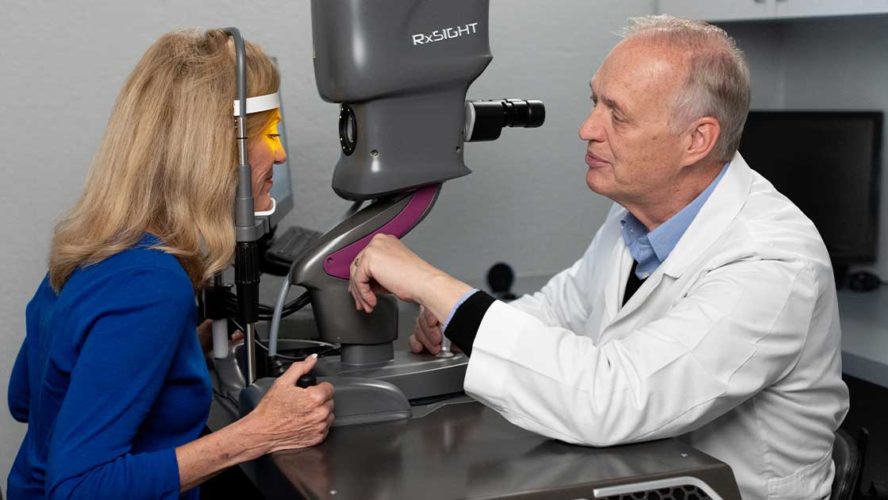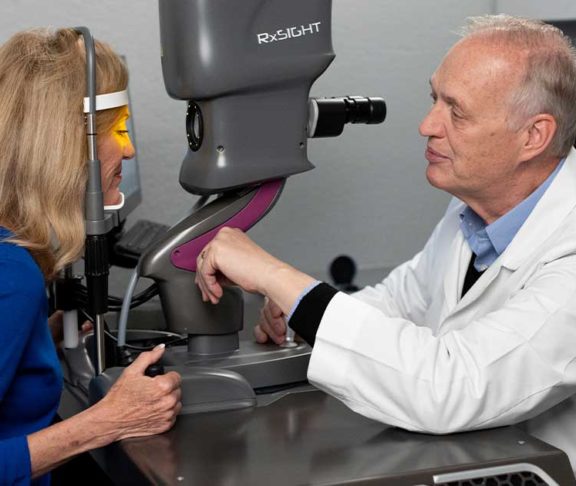The Light Adjustable Lens requires more follow-up than traditional cataract surgery but offers patients customized results.
More than 20 million people have cataract surgery every year, most receiving a clear artificial intraocular lens (IOL) to improve their vision. Until recently, IOLs were non-adjustable, and if the result wasn’t ideal, a patient’s only options included a second round of surgery, a corneal laser touch-up, or tolerating subpar vision. But the Light Adjustable Lens™ (LAL®) from RxSight® has changed all of that.
“For an eye surgeon, you’ve got to have perfect vision,” noted Jim Davies, M.D., an ophthalmologist based in California who recently had LAL surgery on both eyes. “I noticed that I wasn’t seeing things as clearly as I thought I needed to. I’d been following this technology for years, and I’ve been thrilled with the whole experience as a patient and an eye surgeon.”
A better lens
The LAL is made of a photosensitive material that reacts to ultraviolet (UV) light. After the initial implantation, the lenses can be adjusted or “fine-tuned” up to three times by exposing them to a special UV light device. For the first time, this offers the unique ability to refine one’s vision after cataract surgery. Once adjustments are complete, the lens is locked in and no further adjustments can be made.
The adjustments are painless, only take a few minutes each, and the patient can go right back to their life afterward. While this process is more involved than traditional cataract surgery, the extra effort is worth it. Patients are less likely to have to live with imperfect results since the lens can be adjusted to their lifestyle.
The Davies’ story
Jim had his first surgery on a Wednesday and was back in his clinic seeing patients on Thursday. He had his second procedure on Friday and was performing surgeries on Monday. “And the adjustments were quite easy,” he said.
Jim’s experience inspired his wife, Becky, to explore the LAL for her own cataract surgery. Becky wore glasses or contacts for most of her life, but recently had a procedure called a vitrectomy, which caused cataracts to develop as a side effect.
“I started to notice I was losing my vision,” she said. “I was having to wear reading glasses, sometimes I put two pairs of reading glasses on so I could see smaller writing. So, I was very intrigued by the LAL. The whole idea of having these adjustments and fine-tuning my vision was very appealing to me, and then Jim’s experience really sold me on the LAL.”
Despite the more complicated nature of her vision, Becky calls the LAL surgery “easy” and notes she didn’t have any downtime. Jim describes both her distance and near vision as “an optimal result.”
The experience was so positive, Jim and Becky are “constantly” recommending the procedure to friends and family, and Dr. Davies offers the procedure at his practice. “There are people who don’t know about it because it’s relatively new and not all doctors are doing it yet, or aren’t promoting it,” Becky noted. “I just tell them; you need to look into this because it’s the most advanced technology available for treating cataracts at this point.”
Visit RxSight.com for more information about the LAL and to find a provider near you.


